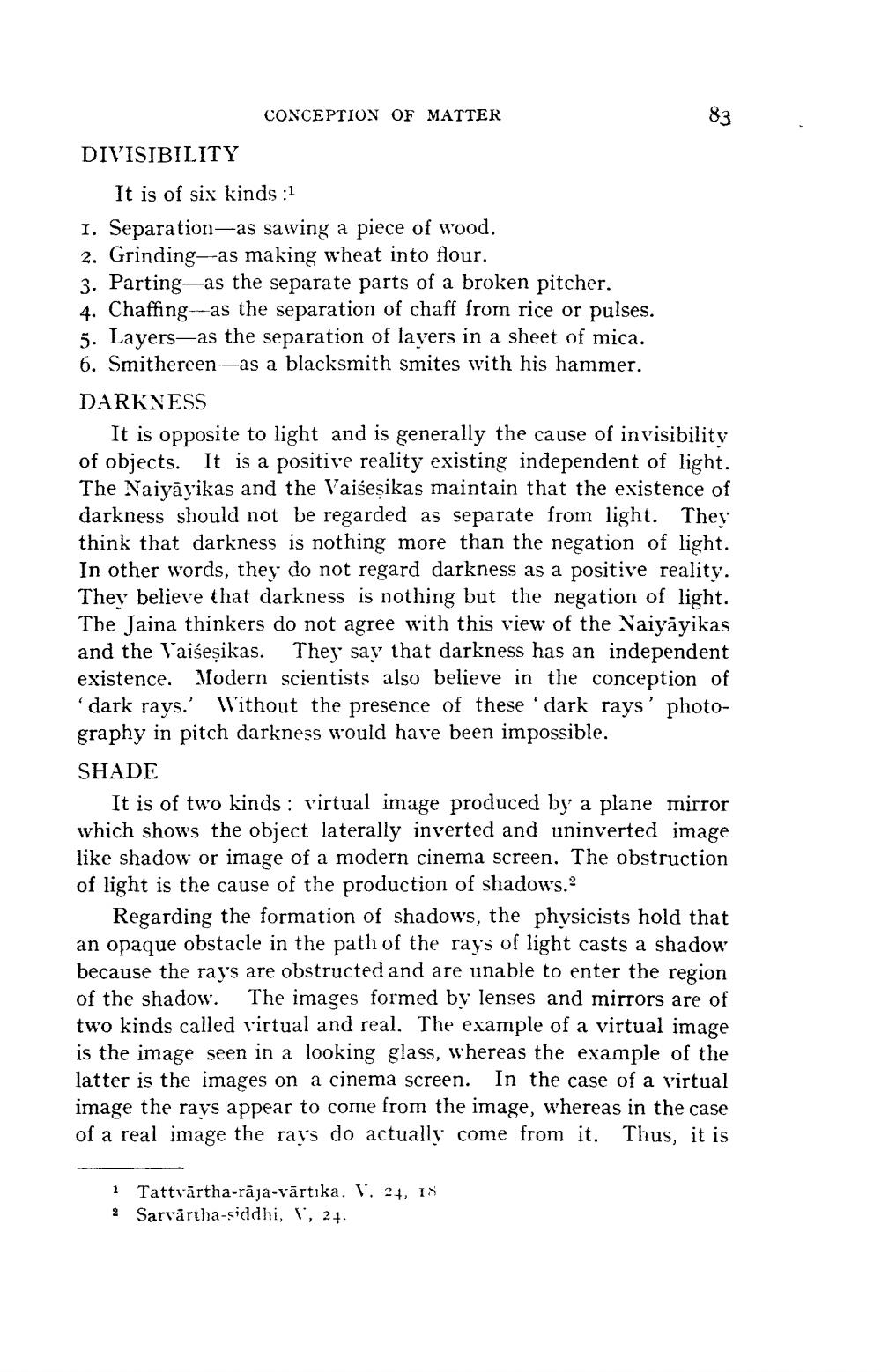________________
CONCEPTION OF MATTER
DIVISIBILITY
It is of six kinds : 1. Separation-as sawing a piece of wood. 2. Grinding-as making wheat into flour. 3. Parting—as the separate parts of a broken pitcher. 4. Chaffing--as the separation of chaff from rice or pulses. 5. Layers—as the separation of layers in a sheet of mica. 6. Smithereen-as a blacksmith smites with his hammer.
DARKNESS
It is opposite to light and is generally the cause of invisibility of objects. It is a positive reality existing independent of light. The Naiyāyikas and the Vaiseșikas maintain that the existence of darkness should not be regarded as separate from light. They think that darkness is nothing more than the negation of light. In other words, they do not regard darkness as a positive reality. They believe that darkness is nothing but the negation of light. The Jaina thinkers do not agree with this view of the Naiyāyikas and the Vaisesikas. They say that darkness has an independent existence. Modern scientists also believe in the conception of
dark rays. Without the presence of these 'dark rays' photography in pitch darkness would have been impossible. SHADE
It is of two kinds : virtual image produced by a plane mirror which shows the object laterally inverted and uninverted image like shadow or image of a modern cinema screen. The obstruction of light is the cause of the production of shadows.?
Regarding the formation of shadows, the physicists hold that an opaque obstacle in the path of the rays of light casts a shadow because the rays are obstructed and are unable to enter the region of the shadow. The images formed by lenses and mirrors are of two kinds called virtual and real. The example of a virtual image is the image seen in a looking glass, whereas the example of the latter is the images on a cinema screen. In the case of a virtual image the rays appear to come from the image, whereas in the case of a real image the rays do actually come from it. Thus, it is
1 Tattvārtha-raja-vārtika. 1. 24, IS 2 Sarvartha-siddhi, V, 24.




